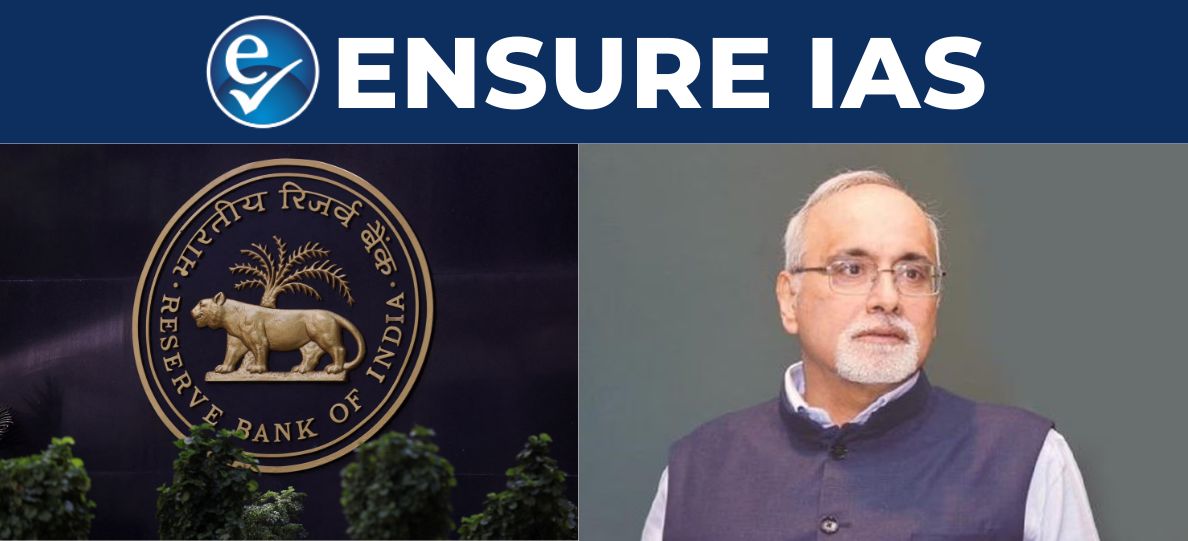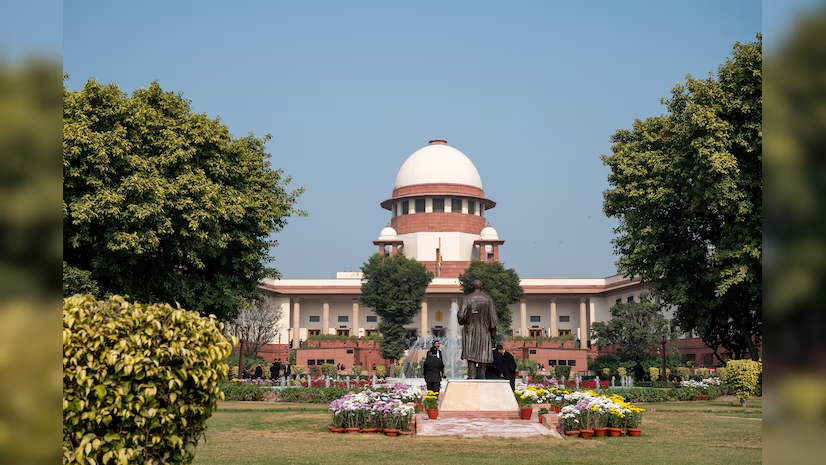- Courses
- GS Full Course 1 Year
- GS Full Course 2 Year
- GS Full Course 3 Year
- GS Full Course Till Selection
- Online Program
- GS Recorded Course
- NCERT (Recorded 500+ Hours)
- Polity Recorded Course
- Geography Recorded Course
- Economy Recorded Course
- AMAC Recorded Course
- Modern India, Post Independence & World History
- Environment Recoded Course
- Governance Recoded Course
- Science & Tech. Recoded Course
- International Relations and Internal Security Recorded Course
- Disaster Management Module Course
- Ethics Recoded Course
- Essay Recoded Course
- Current Affairs Recoded Course
- CSAT
- 5 LAYERED ARJUNA Mentorship
- Public Administration Optional
- ABOUT US
- OUR TOPPERS
- TEST SERIES
- FREE STUDY MATERIAL
- VIDEOS
- CONTACT US
RBI Deputy Governor Warns Against 'Reckless Financialization'
RBI Deputy Governor Warns Against 'Reckless Financialization'

Introduction
Deputy Governor of RBI, Rajeshwar Rao, has raised alarm over the rapid and unchecked expansion of financial activities, known as 'reckless financialization.' This trend, marked by aggressive lending and an overemphasis on financial sector growth over real economic activities, presents considerable risks to financial stability.
What is Financialization?
- Financialization refers to the increasing influence of financial markets, institutions, and incentives on economic activities, corporate strategies, and social policies.
- It often involves a shift in focus from traditional productive investments, such as manufacturing and job creation, to prioritizing financial returns and asset values.
- This trend shapes decision-making within businesses, governments, and households, emphasizing the importance of financial gains over other considerations.
- Krippner (2005) defines financialization as "a pattern of accumulation in which profit-making occurs increasingly through financial channels rather than through trade and commodity production "
Key Characteristics of Financialization
-
- Expansion of Financial Markets – Growth of stock markets, derivatives, and speculative investments.
- Shift from Production to Finance – Firms prioritize financial gains (shareholder value) over real economic investment.
- Household Financialization – Increased access to credit, loans, and investment opportunities improves financial inclusion but also raises debt concerns.
- Privatization of Social Services – Insurance, pensions, and healthcare financing increasingly rely on financial markets, improving access but also creating affordability challenges.
Notable Instances of Financialization
-
- Real Estate Market: Property markets create wealth opportunities and attract investment, but excessive speculation can raise housing costs (housing seen as an investment rather than a necessity).
- Corporate Financial Strategies: Some Indian companies use stock buybacks instead of reinvesting in production (e.g., Tata Sons' share buybacks).
- Microfinance Expansion in India: Microfinance has improved financial inclusion but its unchecked growth led to over-indebtedness, as seen in the 2019 Assam microfinance crisis.
Importance of Financialization
Despite the risks, financialization plays a crucial role in economic growth and development when managed properly.
1. Economic Growth and Investment
-
- Increased Capital Flow: Allows businesses to raise funds efficiently through stock markets, bonds, and other financial instruments. (E.g. India's market capitalization surged to $4 trillion in 2023, reflecting the increased financial deepening of the economy)
- Foreign Direct Investment (FDI): Financialization facilitates FDI and Foreign Institutional Investment (FII), bringing in external capital. (E.g.India received $70.9 billion in FDI in 2022-23, with significant inflows in fintech and banking.)
2. Financial Inclusion and Access
-
- Technology-Driven Banking: Expansion of UPI, digital payments, and fintech solutions has improved financial access. (E.g. Over 50 million Jan Dhan accounts have been opened in India since 2014, bringing the unbanked population into the financial system.)
- Expansion of Credit Markets: More accessible credit boosts entrepreneurship and economic activities. (E.g. MSME loan disbursements increased by 30% in 2023, enabling small businesses to grow.)
3. Risk Management and Hedging
-
- Derivatives and Insurance: Financial instruments like derivatives and insurance help manage risks in business and investments.
4. Wealth Creation and Savings
-
- Stock Markets and Mutual Funds: Households now invest more in equities and mutual funds instead of traditional savings.
- The number of mutual fund SIP (Systematic Investment Plan) accounts in India crossed 7 crore in 2023.
- Retirement Savings Growth: More people are investing in pension funds and provident funds, securing long-term financial stability.
Factors Contributing to the Surge in Financialization
-
- Technological Advancements: The integration of technology in financial services has led to innovative lending platforms and digital payment systems, increasing the reach and speed of financial transactions. (UPI-based transactions in India)
- Regulatory Easing: Relaxation of certain financial regulations has allowed non-banking financial companies (NBFCs) and fintech firms to expand their services rapidly.
- Consumer Demand: A growing middle class with rising aspirations has led to increased demand for credit, particularly unsecured loans for consumption purposes. (e.g., personal loans for online shopping and travel)
- Investor Pressure: Financial institutions, under pressure to deliver high returns, may adopt aggressive growth strategies, sometimes at the cost of prudent risk management.
Challenges and Risks of Unchecked Financialization
While financialization can drive economic growth, excessive and unregulated expansion poses significant risks:
1. Overemphasis on Speculation
-
- Speculative investments divert funds from productive sectors.
- The 2008 Global Financial Crisis was triggered by excessive speculation in subprime mortgages.
2. Rising Inequality
-
- Financialization disproportionately benefits large investors and corporations over the general population.
- India’s top 1% controls 40% of national wealth, while small businesses struggle for credit.
3. Debt-Driven Growth and Over-Leveraging
-
- Excessive borrowing by households and businesses can create debt traps.
- Household debt in India reached 40% of GDP in 2023, raising concerns about repayment risks.
- Over-leveraging increases default risks, causing systemic financial instability.
4. Asset Quality Deterioration
-
- A surge in unsecured lending raises concerns over the quality of assets held by financial institutions.
- Personal loan delinquencies overdue by 90+ days rose to 5.1% from 3.9% - TransUnion CIBIL 2023.
5. Aggressive Lending and Regulatory Arbitrage
-
- Some NBFCs charge exorbitant interest rates, leading to borrower distress.
- The RBI has warned against ‘growth-at-any-cost’ strategies that threaten financial stability.
- The rapid rise of fintech and shadow banking has sometimes outpaced regulatory oversight, leading to potential systemic risks.
6. Risk of Financial Crises
-
- Excessive financialization can create liquidity shortages and systemic instability.
- The IL&FS crisis (2018) was caused by over-borrowing by an NBFC, impacting the broader financial sector.
Recent Cases:
-
- Navi Finserv: In mid-October 2024, the RBI imposed restrictions on Navi Finserv, an NBFC, due to its excessive loan pricing and significant mark-ups over funding costs. After the company revamped its processes to comply with regulatory guidelines, the restrictions were lifted in December 2024.
- Microfinance Institutions (MFIs): Certain MFIs, in pursuit of high returns, have engaged in aggressive lending, leading to borrower over-indebtedness. This has raised concerns about the potential for increased defaults and the broader impact on financial stability. (E.g.Spandana Sphoorty Financial Limited ,HQ-Telangana-faced significant challenges in 2023 )
Regulatory Measures and Sustainable Financialization
To mitigate the risks of reckless financialization, the RBI has implemented several measures:
- Enhanced Regulatory Oversight: Increased scrutiny of NBFCs and fintech firms, ensuring adherence to prudent lending practices and risk management frameworks.
- Capital Adequacy Requirements: To mitigate risks associated with unsecured lending, the RBI raised the risk weight for personal loans from 100% to 125%, compelling lenders to maintain higher capital buffers.
- Strengthened Consumer Protection: The RBI has mandated fair lending practices, cautioning against exorbitant interest rates and hidden charges that can lead to borrower distress.
- Cautious Technological Integration: While technology has the potential to enhance financial inclusion, the RBI advocates for responsible adoption, ensuring that digital lending platforms operate within regulatory boundaries.
- Encouraging Sustainable Investment: Policies should prioritize productive sectors over speculative financial activities, ensuring that investments contribute to real economic growth.
- Promoting Financial Literacy: Enhancing consumer awareness about financial risks, promoting responsible borrowing habits, and encouraging transparent financial products.
Conclusion
Balanced financial sector growth is key. Innovation and expansion drive economic development but must be pursued with caution to ensure robust risk management and consumer protection. Effective collaboration among regulators, financial institutions, and consumers is vital for a stable, inclusive, and sustainable financial ecosystem, aligning with India's Vision 2047 and its aspirations of global economic leadership.
Important Regulatory Bodies
|
Regulatory Body |
Details |
Role in Controlling Reckless Financialization |
Key Areas Regulated |
|
RBI(Reserve Bank of India ) |
- Established: 1935 under the RBI Act, 1934. |
- Regulates monetary policy, inflation, and liquidity. |
Banking sector, NBFCs, foreign exchange, payment systems |
|
SEBI(Securities and Exchange Board of India ) |
- Established: 1988 as a non-statutory body, became a statutory body in 1992 under the SEBI Act, 1992. |
- Regulates stock market speculation and prevents manipulation. |
Stock markets, mutual funds, investment banks |
|
FSDC(Financial Stability and Development Council ) |
- Established: 2010 by the Government of India |
- Monitors systemic financial risks and market stability. |
Cross-sector financial stability, financial crises prevention |
State Governments regulate money lending under state laws, but RBI governs NBFC-MFIs. Their role is limited after RBI’s 2022 guidelines, but they still control interest rates, collection practices, and oversee non-NBFC money lenders, coordinating with RBI for microfinance oversight.
|
Also Read |
|
| FREE NIOS Books | |




